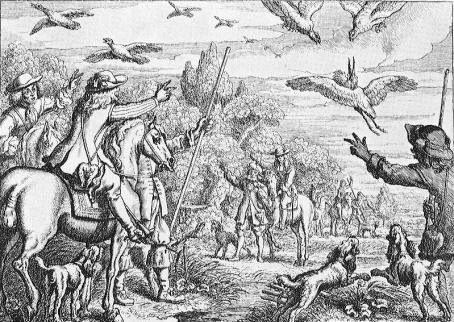

We take note of any queries and criticisms from our readers, so we intend to publish information on this page in lieu of footnotes in the actual book, (which would have been unwieldy). Please keep your comments coming in and I will do my best to address them here.
*****
Chapter 1 p5 "The poachers of Furness haven't been sending me newsletters while I've been abroad"
Like the lady who pointed this out, I thought newsletter was an anachronism. Not so- in fact newsletters predated newspapers:
"... a term specially applied to the manuscript records of parliamentary and court news, sent twice a week to subscribers from the London office of Muddiman (top journalist of his time) in the second half of the 17th Century."
The Oxford Companion to English Literature, London 1985
*****
Chapter 7 p74 Can peregrines kill a heron?

Again, this sounded unlikely, as peregrines are so much lighter and smaller than herons, but research proved otherwise. There are lots of accounts on falconry sites of a cast of falcons being flown at a heron. Dickens writes about the practice in All the Year Round, Sept 26th 1863, but most fascinating of all was a contemporary print I found on Nicole Kipar's excellent website about 17th Century Clothing.
*****
What was the relationship of alchemy, at that period, to what would eventually become chemistry?
This was raised by Rick in a comment on Carla Nayland's review.
Mike says:
Rick raises an interesting point.
In The Alchemist (1610), Ben Jonson portrays a pair of confidence tricksters, Subtle and Face, who cheat gullible and greedy "investors" out of their money, and their metal goods. This was a play that remained in performance right through the 17th century, obviously presenting a popular view of alchemists.
But many scholars we think of as the earliest scientists also practised alchemy. Isaac Newton, for instance, produced more writing on the study of alchemy than he did on either optics or physics. At the time of his death, he had 169 books on the topic of alchemy in his personal library.
During the 17th century, practical alchemy started to evolve into chemistry, as it was renamed by Robert Boyle in his book, The Sceptical Chemist.
In Moon in Leo, Kathleen Herbert represents Adam Halistan as both a mystical scholar and a practical experimental scientist.
There is a purpose built and fully equipped laboratory in his house at Park.
"My father is a respected scholar, known to the Royal Society. He corresponds with Mr Evelyn and Mr Boyle, both of them the King's friends," claims Rosamund.
Rosamund is amused when Lady Elizabeth refers to him as "a man of learning, a great chemist."
"She guessed that 'chemist' stood for 'alchemist' on Lady Elizabeth's lips, with all that meant of vulgar misconceptions about turning lumps of iron into gold." (my italics)
However, earlier in the story, Stephen has ridiculed Rosamund's use of occult names for chemicals as old-fashioned:
"O Rose, must you use these fantastic names? I'm tired of hearing about Green Lions and Hidden Kings! If you're going to work with mercury and antimony, or extract iron from a thunderstone, why can't you say so in plain English?"
"You know very well why."
"My poor girl, are you afraid Sir John Westby will have you swung for a witch?"
"Have you forgotten how many of our family died horribly for other men's fear or greed?"
He laughed impatiently.
"Those days are long past. You can put anything you like down on paper and read it to the Royal Society, provided you make it scientifically accurate - and clear."
Kathleen has in mind that, for all his efforts to follow the developments of London based scientists, Adam and his daughter are rather behind the times in the backwater of Furness.
Rosamund has been brought up in an ethos of secrecy and coded language, fuelled by memories of persecution.
(Possible Spoiler)
Maybe that is why she is drawn to Simon, the occult mage, rather than someone more transparent.

